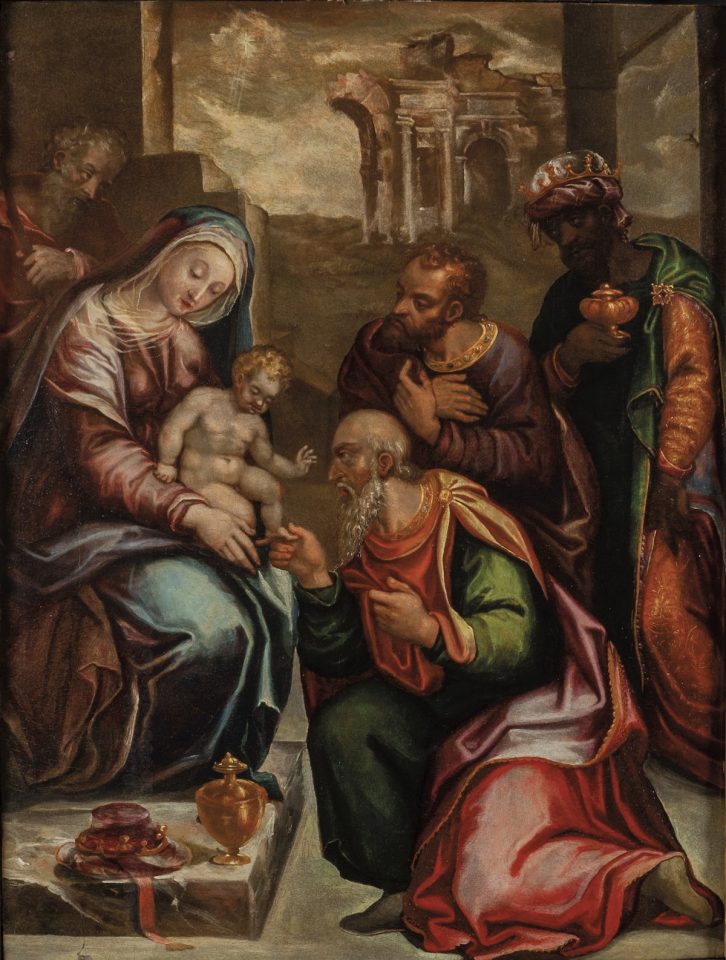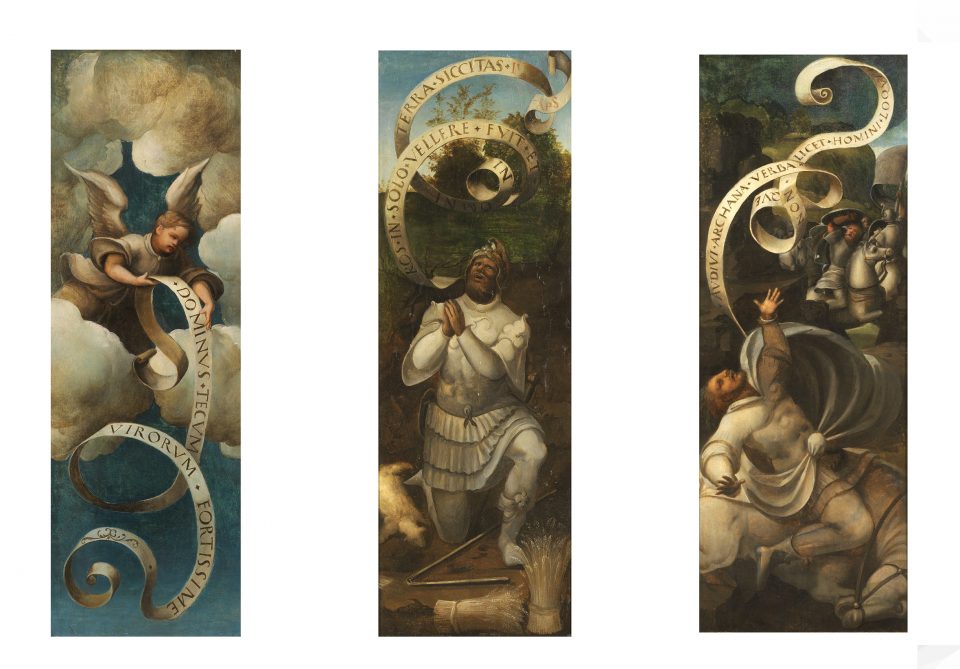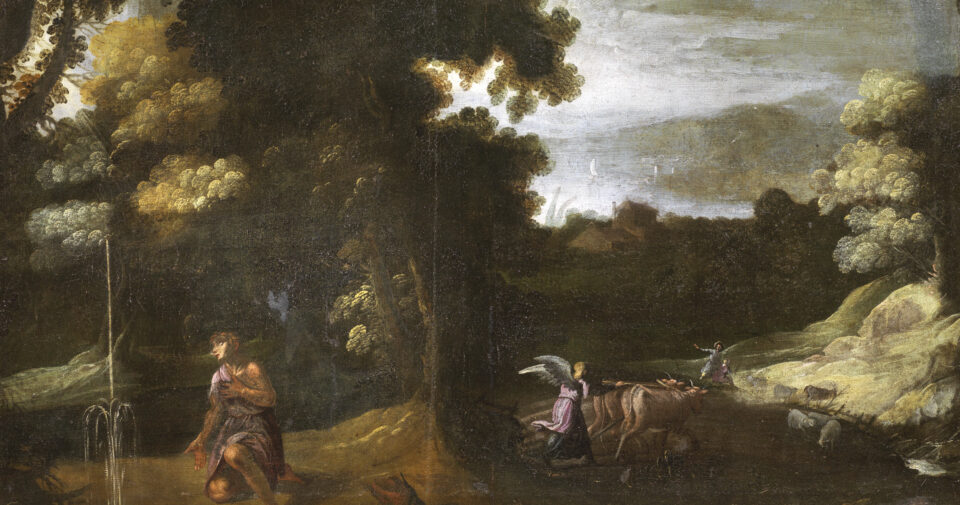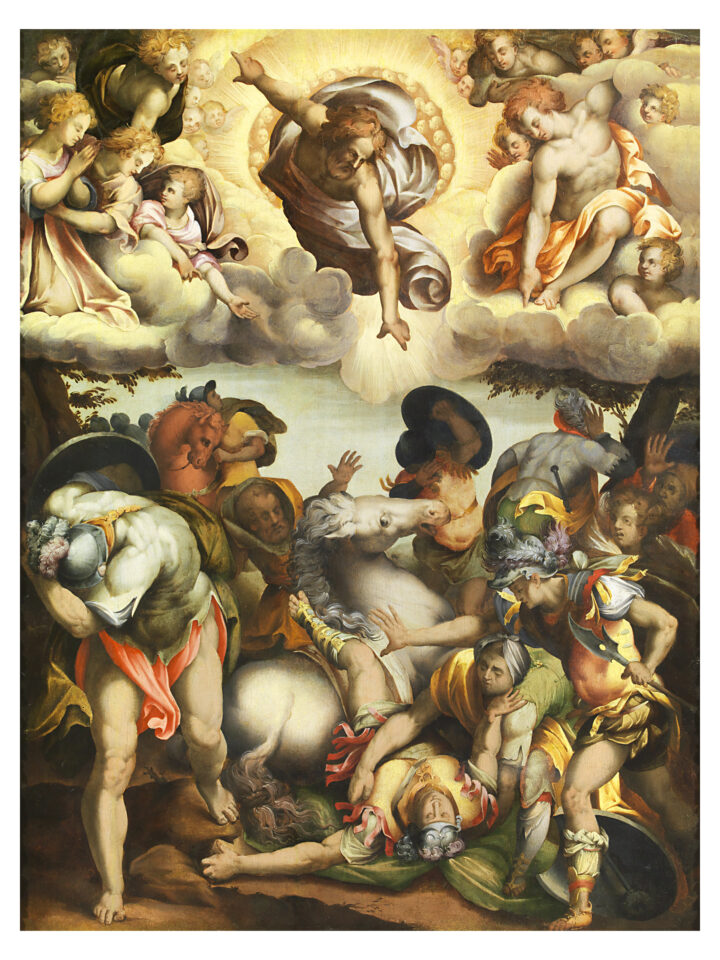ANDREA DI NICCOLÒ
Siena, 1445-1525
Stories of Saint Catherine of Siena
tempera on panel, cm 34×96
inscriptions: “[a]gnesa” above Saint Agnes of Montepulciano, “[p]olitian”, below the saint; “[ant]oni[nus]” above Saint Antoninus of Florence, “de florentia”, below the saint; “b[…]na” above the saint to the right.
The delicate chromatic accords – like the combination of pale green and pink of the niches in which the saints stand – would be sufficient indication of the Sienese origin of this late-Fifteenth century work on wood. Moreover, the image of tall stone towers hovering above buildings and walls in brick, on the left side of the work, represent the unmistakeable silhouette of the Tuscan city clinging on gentle hills.
Marco Ciampolini, author of a study on the painting, has made a painstaking reconstruction of the two principal scenes arranged between the niches. They centre on two episodes in the life of Saint Catherine (1347-1380) as recounted by Raimondo da Capua: her ‘mystic wedding’ with the Lord, who appears together with other saints in her cell after a fast, and the episode in which the Sienese saint dresses Christ, disguised as a beggar, an act of charity which is then rewarded by the latter, who gives her a mantle studded with precious stones.
The former of these two scenes is, as Ciampolini points out, inspired by a work on wood by Neroccio di Bartolomeo de’ Landi (formerly London, the M.R. Waddingham collection) which may be dated to around 1468. However, “the figures, the arrangement of the scenes and even the concept of the work as a whole” seem, above all, to evoke “the art of Matteo di Giovanni (1430 c.-1495)”, even if it is rendered with a “candidness of feeling and […] ingeniousness of expression” which suggest it may be attributed to his follower Andrea di Niccolò.
The suggested attribution of the painting to this artist is corroborated by interesting comparisons with other works by the painter, such as the Martyrdom of Saint Sebastian of the Museo Civico of Casole d’Elsa. According to the scholar, the work may be dated to the first years of the Sixteenth century.
The work was exhibited at the exhibition Amanti. Passioni umane e divine held in Illegio from May 21 to October 8, 2017.
Publications:
“Amanti, passioni umane e divine”, exhibition catalogue edited by Don Alessio Geretti, Udine, 2017, pp. 154-155.





